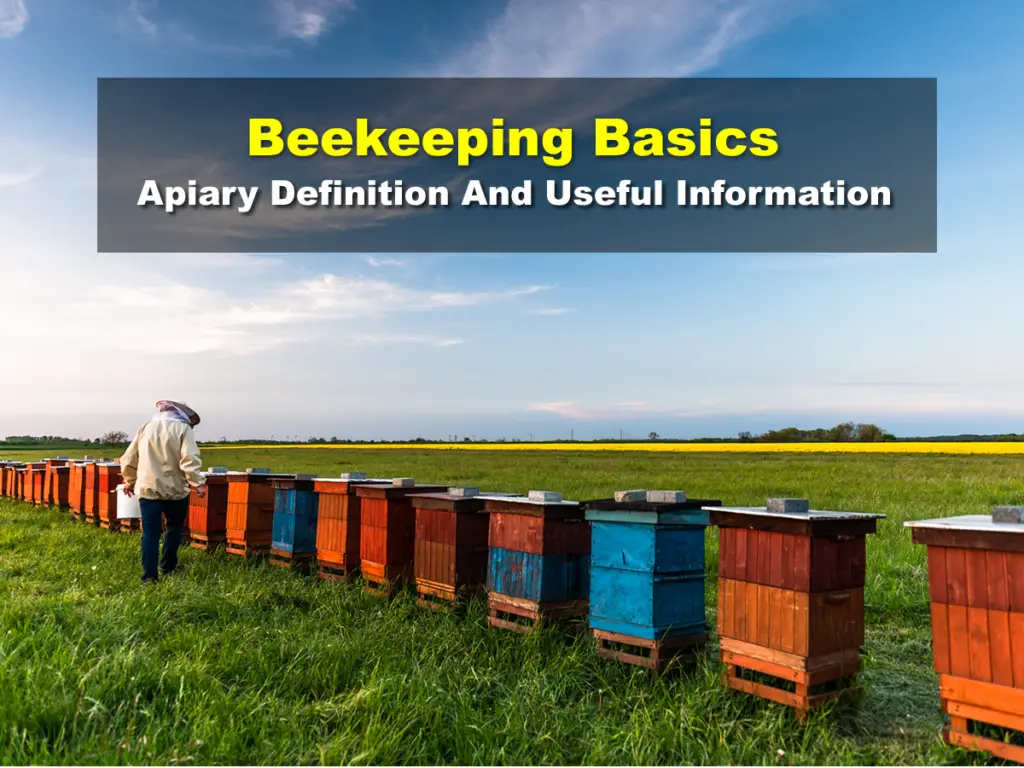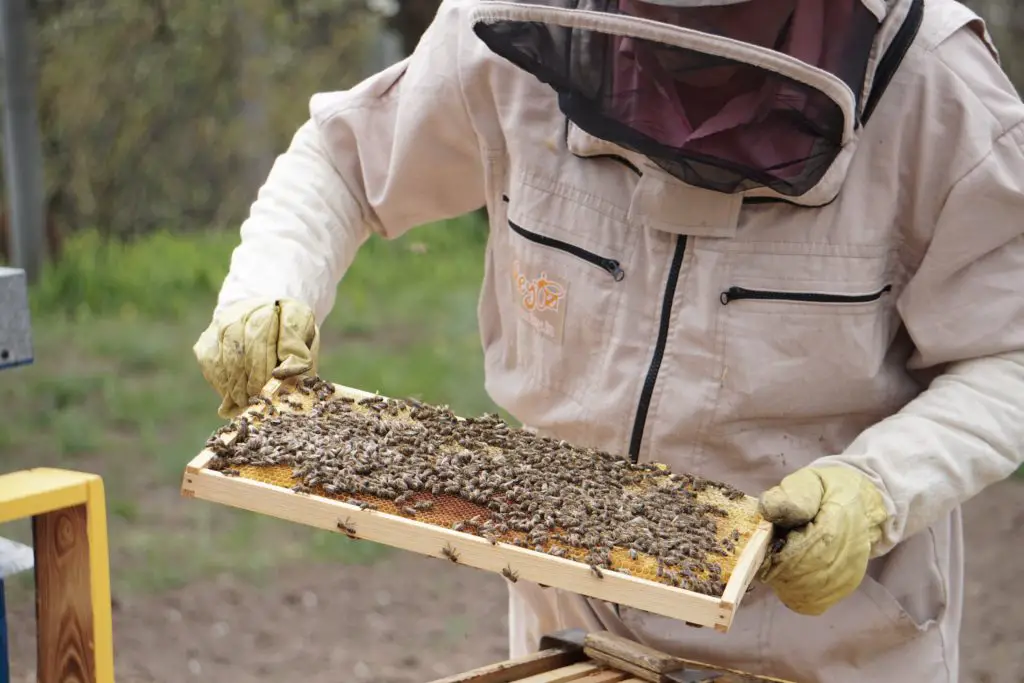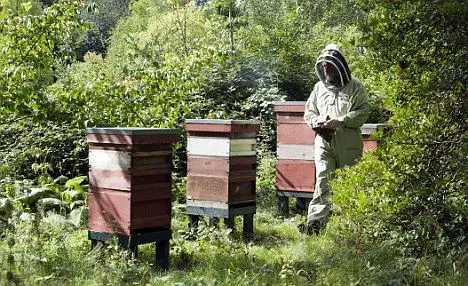Affiliate Disclaimer - As an Amazon Associate I earn from qualifying purchases.
It supports the website. So, Thank you
I remember when I first started beekeeping and if there’s something that always sticks in my mind, it’s the amount of terminology that I had to get my head around. I thought I knew everything there was to know about bees; I mean, how complicated could it really be? Turns out, there was a lot of jargon I needed to get used to.
People kept talking about an apiary. I’d heard of an aviary where birds are kept but if I wanted to fit in with my new beekeeping friends, I kept asking myself, ‘What is an apiary?’ This article is the culmination of what I have learnt.
An apiary is an area where bees are kept. The term does not refer to the hive itself but rather the area in which it is found. This means that an apiary can consist of several hives and may be in a rural or urban setting.
If you’ve just started out with beekeeping and have found yourself in a similar predicament as I did all those years ago, then don’t worry. I’ve created this guide on everything you need to know about an apiary so you’ll be able to talk the talk at your next bee association gathering.
Table of Contents
Apiary Definition In Full
The most simple explanation of an apiary is any area where beehives are kept. If we look at the meaning of the word, we can see that it actually comes from the Latin language. The word apis means bees and the second part comes from the Latin word arium which simply translates to ‘place.’ This is why you’ll sometimes hear an apiary being described as an apiarium or the ‘place of bees.’
No matter what the set-up or where the space is located, provided that there are two or more hives, it is considered to be an apiary. It might be at the bottom of your garden, in a field, or even on a rooftop terrace in the middle of the city. Sometimes, the area might be called a bee yard but they’re one of the same things.
There are two different types of apiaries; temporary and permanent. Permanent apiaries are left in place all year and the hives are never moved. However, some people use a temporary apiary which is moved according to the time of year and which local crops require pollination. This is highly beneficial in agriculture and commercial beekeeping but I’ll go into more detail on this later in this guide.
As I have mentioned, an apiary can be as small as two individual hives. However, if you only have one hive, this is not classed as such. On the flip side, some commercial beekeepers will have massive apiaries that are made up of hundreds of beehives. Generally speaking, a standard apiary will have somewhere between 20 and 30 hives.
What’s The Difference Between An Apiary And A Bee House?
As I discussed earlier, there is a lot of jargon involved in beekeeping and this can feel confusing. Another term you may often hear is a bee house but it’s important to keep in mind that this isn’t the same as an apiary.
Apiaries are where honey bees are kept whereas a bee house is typically used for species of solitary bee, such as the bumble bee. An apiary also consists of two or more hives but a bee house is a single structure and doesn’t contain anywhere near as many individuals.
Bee houses are sometimes called bee hotels and unlike a hive, the inside is made up of groups of tunnels. The structure is, like a hive, made from wood and the holes can be drilled into the material. However, there are other materials that can be used to make a special container for the bees. Once the structure is set up, female solitary bees can then enter and lay their eggs inside each of the tubes.
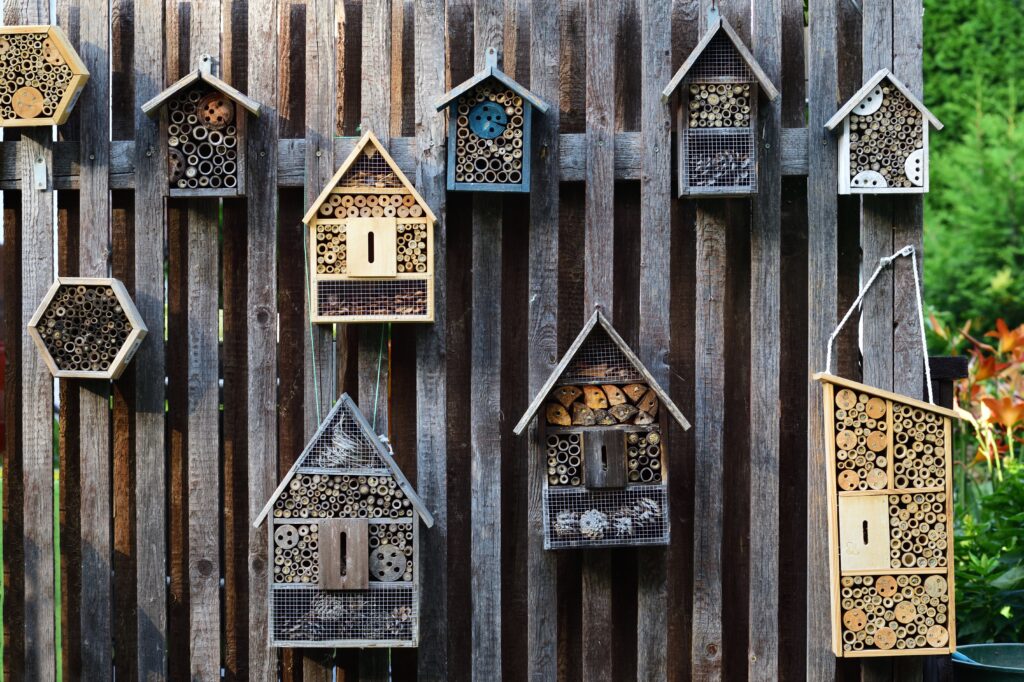
Can I Put My Honey Bees In A Bee House?
Honey bees live in colonies that number tens of thousands so they require a lot of space and hives are perfectly designed for this. A bee house simply does not have the correct amount of space for honey bees to do what they need to do. This includes building honeycombs, raising their young, and communicating with one another.
If you were to attempt to keep honey bees in a bee house, you would likely find that the colony would split. The lack of space would cause the bees to move into other nearby structures such as chimneys, holes in trees, and caves.
On the other hand, if bumble bees were to stumble upon an unused honeybee hive, it might be possible for them to move in and set up residence here. That said, bumble bees and other solitary species would not use the hive in the same way and a lot of the space would not be used.
When Were Apiaries Invented?
Understanding an apiary doesn’t just mean getting to grips with the apiary definition, it’s also about taking a look at where the concept came from in the first place.
If we look back in history, we can see apiaries being used in Ancient Egyptian communities as well as in Ancient Chinese records. There are texts from this region that suggest people were starting apiaries thousands of years ago. However, the differences with these ancient setups were vastly different from what we see today.
For example, even up to the 1800s, an apiary would rarely have more than just a handful of hives. Today, we see some that have hives in their hundreds. The problem for beekeepers back in the 19th century was that the hives were not the same as our modern structures. Instead, they were dome-shaped and in order to get the honey out, the hives would need to be demolished and the bees killed. Each year, the colonies would die and a new one would need to be started the following years.
If you have any experience in beekeeping, you will know that a new colony is not as productive as an established one so honey harvest would not have been as lucrative. Not to mention that, in those days, beekeepers would need to have caught wild colonies which isn’t the most reliable method.
However, this was a problem that beekeepers were well aware of so in 1852, a guy named Lorenzo Langstroth invented a new type of hive called the Langstroth hive that allowed keepers to harvest honey without the need to harm the bees or damage the hive. Moreover, beekeepers began queen rearing at the back end of the 19th century which made commercial beekeeping far more efficient and allowed apiarists to start making much larger bee yards.
As we move into the 20th century, we start to see the idea of temporary apiaries coming in. That was because of the invention of large trucks and vehicles as well as paved roads which could then be used to move hives from place to place. In terms of aiding agriculture, this was a massive breakthrough.
Nowadays, we see two very different types of apiaries. There are those that are used by hobbyists and environmentalists which primarily harvest local honey for small businesses as well as larger apiaries or temporary ones which serve agricultural businesses. The benefit of these is also that farmers can show they are self-sufficient and sustainable.
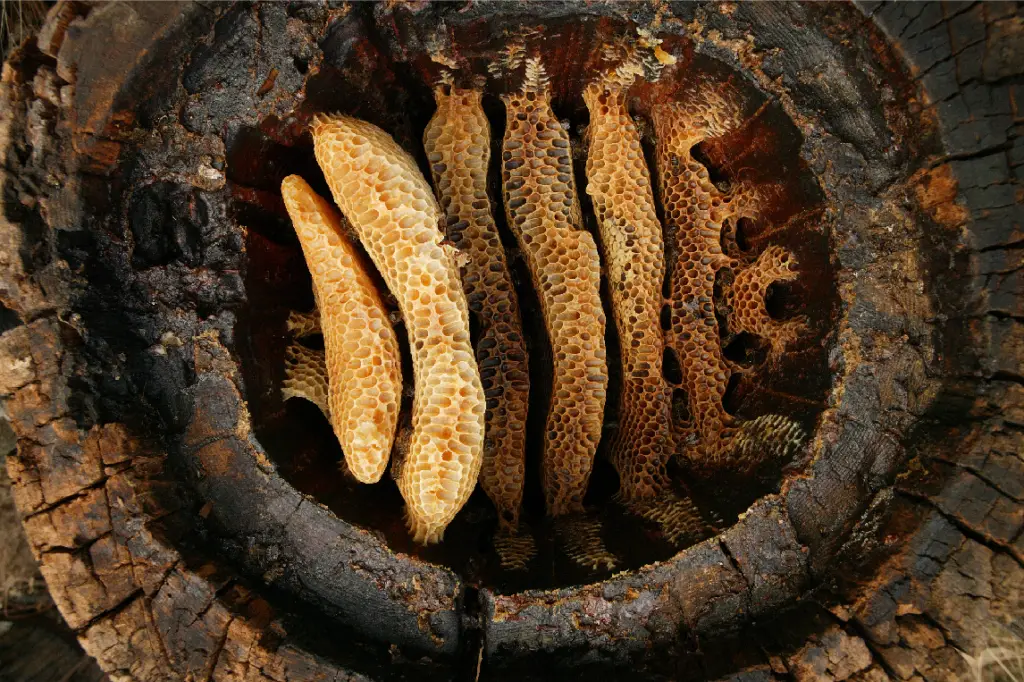
What Is The Benefit Of An Apiary?
It’s obvious by now that apiaries are essential in ensuring the pollination of local crops and of course, wild plants. Each year, honey bees are responsible for making billions of dollars worth of profit to agriculture. This is not only from honey harvest but because the bees pollinate local crops. This is why so many beekeepers place the apiaries near crops including melons, cucumbers, berries, oranges, and many others. As the bees pollinate, this ensures a larger crop yield.
There are also migratory beekeepers who run temporary apiaries, moving them between locations depending on the season to improve the pollination of the crops. They do this by moving the hives using large trucks and they’ll typically do this at night when all of the bees are inside the hive.
However, there are many more benefits to these bee yards including making hive management much easier. If you’re a hobbyist, having an apiary on your own property with all of your hives in one location, it’s far less time-consuming to take care of them all.
Another reason that an apiary is advantageous is that you can inspect the hives together to ensure there is no disease or parasite breakouts. One of the biggest threats to the hive is the varroa mite but having all of your hives close together means easier maintenance and control. You could argue that hives within close proximity to one another would be risky as the spread of disease is much more likely. However, this has been disproven.
Over the winter, the chances of losing an entire colony are as high as 40%. But by keeping two or more hives in the same location, there’s a good chance that one of them won’t be affected by the cold weather.
Moreover, you have to consider how you collect data and assess the positive traits of the hive. If more than one colony is living in the same environment, it becomes a lot simpler to determine what factors, if any, are affecting them. By understanding this, the beekeeper is then able to work with this information and concentrate on producing stronger, more resilient bees.
Let’s also consider outside threats to the hives. If you live in an area with a lot of predators; bears for example, you will need to make sure that the hives are protected. Placing them separately means installing measures for each hive. However, by starting an apiary, you have the advantage of being able to protect all of the hives using structures like electric fences, solid boundaries, and so forth.
If you are planning to start a small business selling honey, or even on a larger scale, you want your products to be consistent. The taste, color and consistency of honey will vary from area to area based on what plants are available. Of course, you also have to consider that the time of year and weather will affect the appearance and taste of the honey. But having hives within an apiary will ensure as much consistency as possible so you can build a brand that’s renowned for a specific taste and color.
Starting Your Own Apiary
If you are new to beekeeping, I would always recommend starting with just one or two hives. This is because many new beekeepers find that their first colony does not survive overwinter so by starting small, you don’t put yourself in a position where you might lose a lot of money.
But even if you’re someone who has started off with a single hive and is now ready to move on to greater things, starting an apiary is a wonderful idea. However, there are some things to consider so let’s take a look at these now.
Why Start An Apiary
You might wonder what the point of having an apiary is and what different people choose in terms of size. One of the main reasons that people have an apiary is simply because they’re passionate about bees and want to take care of them. In this case, beekeeping is typically a hobby and the apiarist will benefit from being able to observe the bees going about their business.
For some people, having an apiary is an environmental choice. It’s no secret that bees are an essential part of the ecosystem and they’re responsible for pollinating as much as 75% of human crops. For those who want to ensure harmony and balance in the local ecosystem, having an apiary means they can contribute towards this.
Of course, we all know that bees produce honey and having your own apiary means that you get a constant supply of honey which you can use yourself or sell for a profit. However, if this is your motivation for starting an apiary, it is vital that you leave enough honey for the bees over winter as they will use this as a food source. Without it, the colony will not survive the cold months.
Apiaries are also important in farming and commercial situations. Farmers often start an apiary in order to ensure healthy pollination of their crops. However, there are lots of businesses that will also start apiaries as a way of providing bees for local farmers and their own needs.
How To Start An Apiary
For anyone looking to start an apiary, there are generally two options. You could go in and start the apiary yourself or you might liaise with a local experienced beekeeping or beekeeping company. This is usually the best option for those who have never set up an apiary before as you’ll benefit from the knowledge and expertise.
But if you feel as though you already have enough experience then there’s nothing wrong with going it alone. There are some things I would recommend, however, to ensure that everything goes to plan.
- Be sure to check with your local authority that beekeeping is permitted. The laws on this will differ by state and may affect the number of hives you’re allowed to place and a variety of other regulations. It’s worth noting that the size of your property will also affect how many hives you’re allowed to keep.
- Before you get started, I’d strongly recommend assessing potential areas for your apiary. While you might have a particular spot in mind, there might be a chance that this won’t work. You will need to make sure that there is a good amount of open space but that the area is sheltered from any wind, especially during the winter. In some areas, there may be restrictions on where you can place the apiary in relation to public walkways.
- Once you have chosen your location, you will need to make suitable plans. Don’t be tempted to just go out there and place a ton of hives in the area; be sure to make a site plan to guide you. Hives should not be placed too close to one another. In fact, you’ll need around three feet between each one.
- It’s also really important to make sure that there is enough local plant life for the bees to forage. It doesn’t matter whether you live in a rural or urban area, you can still provide enough for your bees if you plan correctly. If you’re in an urban spot without a lot of plants then it’s as simple as planting your own pollinator garden.
- It can be tempting to place lots of hives in your apiary if you have a lot of space but it’s really important not to go over the top. Bees need an astounding number of flowering plants in order to produce enough honey and placing too many hives in one area could be counterproductive.
- When it comes to the hives themselves, be sure to place the bee boxes on top of something and not directly on the ground. Cement slabs or cinder blocks are ideal for this.
- Bees need water so it’s vital that your apiary either has its own source of water or that there is one close by. If not, you’ll need to add something like a trough or even build your own wildlife pond, if space permits.
- Also, consider what predators are in the local area and make sure that you set up appropriate protection for the apiary.
- Now that everything is set up, it’s time to bring in the bees. You can buy a packet of bees for each hive but also make sure to purchase a queen for each one
Final Thoughts
The definition of apiary is a place where bees are kept but this isn’t to be confused with a hive. While a hive is the primary home of the bees, an apiary is an area where two or more hives are contained. Some of the largest apiaries may have hundreds of hives but if you’re a hobbyist, then it’s possible to set one up with just a few hives.
Regardless of this, there are a lot of things to consider when setting up your apiary and it’s vital not to go in all guns blazing. Proper planning and preparation are key to a successful apiary and with knowledge and experience, you’ll be able to create a haven for your colonies and enjoy the many wonderful benefits of beekeeping.

